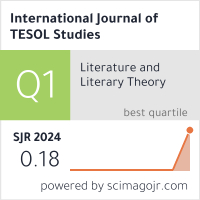2632-6779 (Print)
2633-6898 (Online)


Scopus
Ulrich’s Periodicals Directory (ProQuest)
MLA International Bibliography
MLA Directory of Periodicals
Directory of Open Access Journals (DOAJ)
QOAM (Quality Open Access Market)
British National Bibliography
WAC Clearinghouse Journal Listings
EBSCO Education
ICI Journals Master List
ERIH PLUS
CNKI Scholar
Gale-Cengage
WorldCat
Crossref
Baidu Scholar
British Library
J-Gate
ROAD
BASE
Publons
Google Scholar
Semantic Scholar
ORE Directory
TIRF
China National Center for Philosophy and Social Sciences Documentation
Sotheara Veng
Royal University of Phnom Penh, Cambodia
Abstract
Students' engagement has been considered an essential element in classrooms and students' academic performance. However, the pandemic caused schools to be closed temporarily for in-person learning and made interactions almost impossible for teachers and students in physical classrooms. Maintaining students’ meaningful engagement in an online learning environment remains a concern for many educators in Cambodia. This may present a problem in teaching critical thinking as student engagement is important for developing higher-order thinking (Shcheglova et al., 2019; Strauss & Terenzini, 2007). Since both educational technology and critical thinking education in the country are still in their infancy, explorations into these practices are typically done by trial and error. Therefore, it is imperative that more empirical studies are conducted to elucidate a deeper understanding in this area. This paper aims to examine junior university students' experiences and perceptions towards their classroom engagement through the implementation of a web-based tool called Nearpod in teaching critical thinking (CT) in an English as a Foreign Language (EFL) class. The course is designed to help students develop their ability to use higher-order thinking to enhance effectiveness in communication. The study was conducted in five critical thinking classes at the university. As part of the implementation, the three lecturers utilized interactive videos, discussions, formative assessments, and others. Through classroom observation logs and interviews with students, it was found that most students were engaged in class activities when the digital tool was used. This experience opens the opportunity for modifications and appropriation for future use in teaching critical thinking and provides a deeper understanding of using technology in Cambodia's critical thinking classroom.
Keywords
Engagement, critical thinking, behavioral engagement, cognitive engagement, emotional engagement